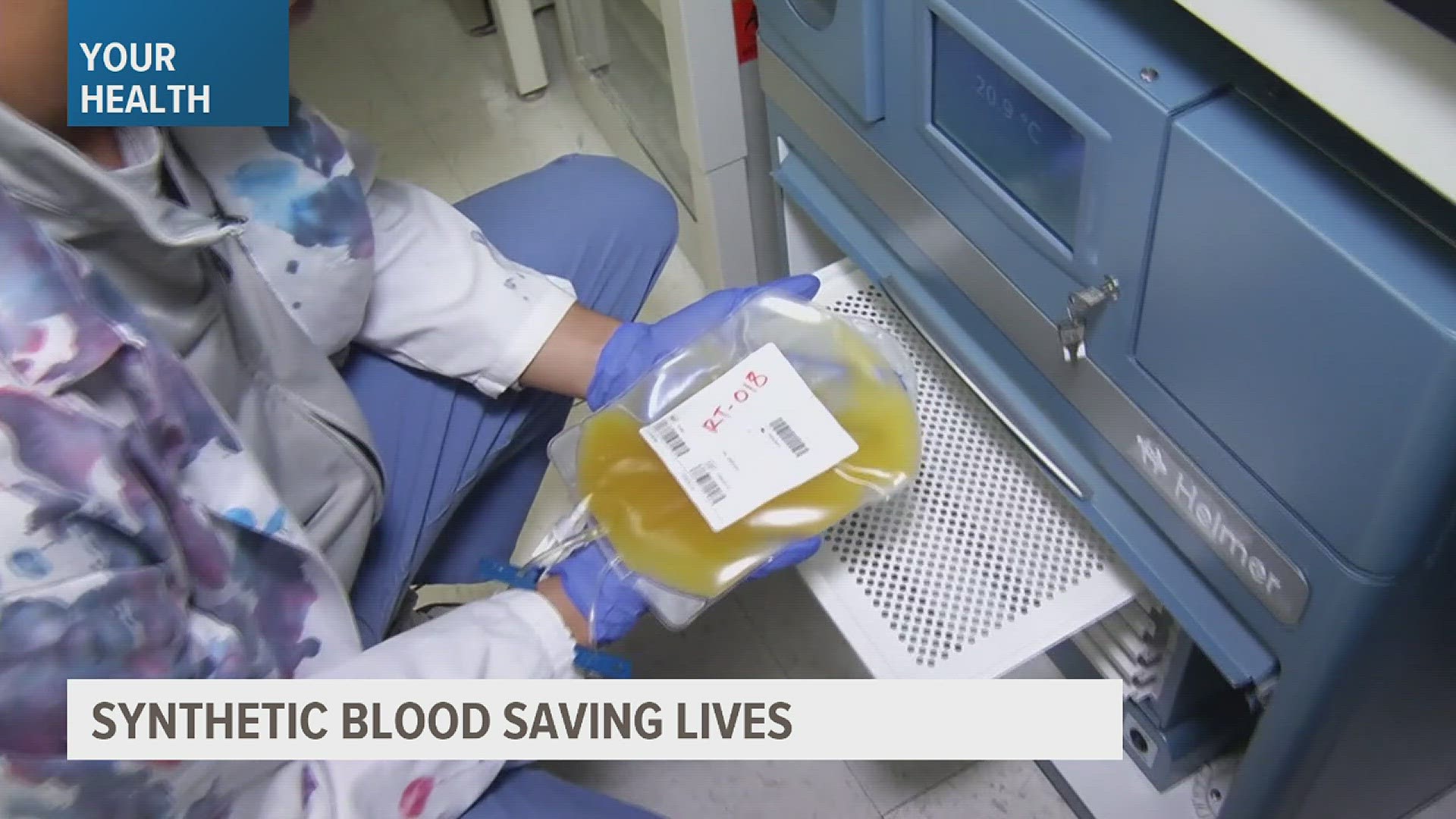PITTSBURGH — Blood – we can’t live without it. It makes up seven percent of our body weight. And this year, four and a half million people will need a blood transfusion. Blood banks continue to face dire shortages as supplies have failed to reach their pre-pandemic levels. In fact, a fifth of blood centers nationwide have less than a day’s supply of blood. And according to America’s blood centers, 29 percent have just enough to last two days.
Every two seconds, someone needs blood. In fact, one in seven people who go into the hospital will need blood. Because the demand is so great, researchers are creating a new type of synthetic blood in the lab.
Bioengineer Susan Shea, PhD, at the University of Pittsburgh said the holy grail for transfusion is a dried artificial whole blood. Shea is part of a nationwide team working to make synthetic blood a reality. It looks like a powder and has the same components as human blood.
“This product that we're developing will consist of a nanoparticle that is able to perform the function of a red blood cell so it can deliver oxygen,” Shea explained.
The synthetic blood does not have to match the patient’s blood type.
Shea added, “The cellular components are artificial, and they, therefore, will not express those markers that recipients might have an adverse reaction to as they would if they received a type mismatched blood donation.”
And unlike donated blood that has a shelf life of up to 42 days, ideally, this synthetic blood could last months, even years. It does not need to be refrigerated so it can be used not only in hospitals, but also ambulances, rescue helicopters and war zones – places where it’s difficult to have blood readily available.
“I don't know that we can guarantee that this product alone will eliminate the blood shortage, but it's certainly a very important step forward,” Shea emphasized.
One pint of blood can save up to three lives. Only 37 percent of the U.S population is eligible to donate blood – less than 10 percent actually donate. If you are a healthy adult over the age of 17 and weigh at least 110 pounds, you can donate.
Contributors to this news report include: Marsha Lewis, Producer; Kirk Manson, Videographer; Roque Correa, Videographer & Editor.
Watch more news, weather and sports on News 8's YouTube channel

